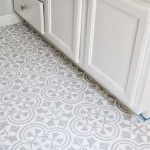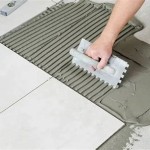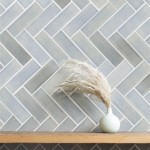Do You Have To Replace Cement Board Under Tile?
Cement board is a durable and versatile material used as a backer for tile installations in wet areas such as bathrooms and kitchens. Its water-resistant properties make it ideal for these applications, but what happens if the cement board becomes damaged or compromised? In this article, we'll explore the circumstances that necessitate replacing cement board under tile and provide guidance on whether it's a necessary step.
### Signs of Cement Board DamageSeveral indicators may suggest that the cement board under your tile may need replacement:
- Cracks or Breaks: Significant cracks or breaks in the cement board can undermine the integrity of the tile installation and lead to failure.
- Soft Spots: Areas of the cement board that feel soft or spongy when pressed may indicate water damage or degradation.
- Mold or Mildew: Mold or mildew growth on the cement board is a clear sign of moisture penetration, which can weaken the board and compromise the tile installation.
- Loose Tiles: Loose or cracked tiles may be a symptom of underlying cement board damage.
- Water Damage: If your bathroom or kitchen has experienced water damage, such as a leak or flood, the cement board may have been affected and may need to be replaced.
Replacing the cement board is crucial in the following situations:
- Extensive Damage: If the cement board is severely damaged, cracked, or broken in multiple areas, it's advisable to replace the entire board to ensure a stable and secure foundation for the tile.
- Water Damage: Water damage can significantly weaken the cement board, making it susceptible to further deterioration and compromising the tile installation.
- Mold or Mildew: Mold or mildew growth on the cement board can spread and damage the tile and grout, posing health concerns as well.
- Loose Tiles: If tiles are loose or cracked due to underlying cement board damage, replacing the board is necessary to prevent further failure.
- Remodeling: If you're planning to update or remodel your bathroom or kitchen and the existing cement board is old or damaged, it may be prudent to replace it as part of the renovation process.
In some cases, it may not be necessary to replace the cement board under the tile:
- Minor Cracks: Small, hairline cracks in the cement board may not require replacement if they don't affect the structural integrity of the board or tile installation.
- Surface Damage: If the damage to the cement board is only superficial and doesn't extend deep into the material, it may be possible to repair the surface with a suitable adhesive or patching compound.
- Minimal Water Exposure: If the cement board has only been exposed to a small amount of water and there's no evidence of damage or deterioration, it may not need to be replaced.
Determining whether or not to replace the cement board under tile depends on the extent and severity of the damage. If the cement board is severely compromised due to cracking, water damage, mold growth, or loose tiles, replacement is essential to maintain a safe and durable tile installation. However, in cases of minor cracks, surface damage, or minimal water exposure, repair or patching may be sufficient. Consulting with a qualified contractor is always advisable if you're unsure about the condition of your cement board or whether it needs to be replaced.

How To Install Cement Board On A Floor Diy Family Handyman

Cement Board Installation On Floors 5 Mistakes To Avoid Diytileguy

How To Install Cement Backer Board For Floor Tile Installation The Home Depot

How To Install Cement Board For Tile Projects Diy Family Handyman

How To Install Cement Board In 3 Easy Ways Q3 2024 Infographic

Thinset Under Cement Board Yes Or No Ord Ceramic Tile

How To Install Cement Board In 3 Easy Ways Q3 2024 Infographic

How To Install Hardie Backer Cement Board On Floors James Pros

Installing Cement Backerboard For Tile Flooring Hometips

How To Install Cement Backer Board For Floor Tile Installation The Home Depot
Related Posts








